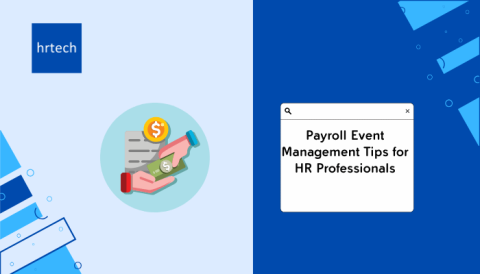The business landscape is evolving fastly and disconnected HR systems are costing you more than you realise, lost productivity, payroll errors, and compliance risks. If managing your workforce and running accurate payroll feels like juggling blindfolded, you’re not alone.
The real problem is siloed systems that don’t talk to each other. Workforce payroll system, by integrating workforce management and payroll, you unlock real-time visibility, operational efficiency, and cost control, all in one platform.
In this article, you’ll discover how integrated software transforms workforce management, simplifies payroll, and helps business leaders like you future-proof HR operations with smarter technology.
Understanding Workforce Management and Payroll Integration
When your business scales, so do the complexities of managing people and processing payroll. Workforce management and payroll integration helps you bridge the gap between employee operations and accurate compensation.
What is Workforce Management and Payroll Integration?
Workforce management (WFM) is about optimising how your organisation deploys its workforce, tracking time, managing schedules, monitoring attendance, and handling leave management. Payroll, on the other hand, ensures your employees are paid accurately and on time, in compliance with tax regulations and labour laws.
Integration means connecting these two critical functions in real-time, so data flows seamlessly from workforce tracking to payroll processing without manual entries or reconciliation errors.
Now that we’ve defined the basics, let’s explore why integrating these functions is a smart business move.
Importance of Integration
According to Deloitte, more than 25 percent of respondents indicated that their payroll staff spends the most time on running payroll (with reconciliation, audits, controls, and data entry not far behind) and are largely manual. Here’s why this matters:
- No More Manual Data Transfers: Eliminate the risk of errors caused by exporting data from one system to another.
- Real-Time Data Visibility: Access accurate, up-to-date information on hours worked, overtime, and absences, all feeding directly into payroll.
- Improved Compliance: Align with local labour laws, tax regulations, and union agreements without the headache of double-checking every entry.
- Enhanced Employee Trust: When paychecks reflect the actual hours and benefits employees are entitled to, you strengthen workforce satisfaction and retention.
With the value of integration established, it’s time to look at what components make up an effective system.
Key Components of an Integrated Workforce Payroll System
When evaluating an integrated solution, look for these core components:
- Time and Attendance Management: Accurate tracking of employee hours, shifts, overtime, and leave.
- Scheduling Tools: Automated shift planning that aligns with business demand and labour laws.
- Leave and Absence Management: Simplify approvals and ensure payroll reflects paid and unpaid leave accurately.
- Payroll Automation: Seamless calculation of wages, deductions, taxes, and benefits.
- Compliance Engine: Built-in checks to ensure alignment with local, regional, and industry-specific regulations.
- Reporting and Analytics: Gain actionable insights on labour costs, productivity, and payroll trends.
Integrating your workforce and payroll systems reduces admin work and creates a single source of truth, enabling smarter, data-driven HR decisions.
Next, we’ll highlight the business-wide benefits of integrating your workforce and payroll tools.
Benefits of Integrating Workforce Management and Payroll Systems
As a business leader or HR professional, you already know that disconnected systems waste time and increase risk. Integrating your workforce payroll system is a strategic move that directly impacts your business performance, employee satisfaction, and compliance readiness.
Here’s how your organisation benefits when workforce management and payroll work together in sync:
1. Reduced Administrative Workload
Manual data entry across multiple systems wastes valuable time and introduces avoidable errors. An integrated system eliminates double-handling by:
- Automatically transferring attendance, leave, and shift data to payroll.
- Streamlining approvals for overtime, bonuses, and deductions in one place.
- Freeing up your HR team to focus on people, not paperwork.
2. Improved Payroll Accuracy
Payroll errors erode employee trust and expose you to legal and financial risks, and their hidden costs can quickly add up. With real-time data flow between WFM and payroll:
- You reduce costly miscalculations related to time worked, overtime, and benefits.
- You minimise disputes and rework, ensuring employees are paid correctly the first time.
- You strengthen financial reporting accuracy for better forecasting and budgeting.
3. Stronger Compliance and Risk Management
Labour laws, tax regulations, and union agreements change frequently. Integrated systems help you:
- Stay compliant with regional tax laws, overtime rules, and employee classification.
- Avoid penalties for misreporting or non-compliance.
- Maintain audit-ready records with complete data traceability.
4. Enhanced Employee Experience
Nothing damages morale faster than inconsistent pay or unclear attendance records. Integrated systems empower your workforce with:
- Self-service access to view their schedules, leave balances, and payslips.
- Transparent payroll processing, reducing anxiety over discrepancies.
- Consistent, timely pay, improving trust and retention.
5. Data-Driven Decision Making
With unified reporting and analytics, you gain visibility into:
- Labour costs vs. revenue performance.
- Absenteeism trends and productivity gaps.
- Workforce utilisation insights for smarter staffing decisions.
These insights allow you to align workforce strategies with business goals more effectively.
6. Scalability for Growth
Whether you’re an SME expanding to new markets or an enterprise managing thousands of employees, an integrated workforce payroll system grows with you by:
- Accommodating complex workforce structures across locations and departments.
- Supporting multi-currency and multi-country payroll needs.
- Providing role-based access for different teams and stakeholders.
By integrating workforce management with payroll, you build a connected, compliant, and people-first HR ecosystem, ready to support your organisation’s growth at every stage.
To get the most out of integration, choosing the right features is critical, here’s what to look for.
Key Features to Look for in Integrated WFM and Payroll Software
As you explore the right fit for your organisation, whether you manage a growing SME or a large enterprise, you need to focus on features that deliver both efficiency and business value.
Here’s a practical checklist of must-have features to help you choose wisely:
1. Real-Time Data Synchronisation
The backbone of any effective workforce payroll system is real-time data syncing between your workforce management and payroll modules. This ensures:
- Immediate updates on attendance, overtime, and leave.
- Accurate payroll processing without manual adjustments.
- Consistent data across HR, finance, and compliance teams.
2. Smart Scheduling and Shift Management
Dynamic workforce demands require flexible scheduling tools. Look for:
- AI-powered shift planning to optimise staffing based on workload and employee availability.
- Real-time shift swaps and approvals to reduce scheduling conflicts.
- Compliance checks to avoid breaching labour laws on rest hours or overtime limits.
3. Accurate Time and Attendance Tracking
Your payroll is only as accurate as your time tracking. Choose a system that includes:
- Mobile and biometric attendance tracking to support on-site and remote employees.
- Geofencing capabilities to validate clock-ins from approved locations.
- Automated overtime calculations based on local regulations.
4. Seamless Leave and Absence Management
Integrated leave management helps you:
- Automate leave requests and approvals.
- Sync paid and unpaid leave data directly into payroll.
- Monitor absenteeism trends through built-in reporting.
This ensures that leave balances and payouts are always accurate and transparent.
5. Automated Payroll Processing
Your chosen solution should handle complex payroll tasks, including:
- Multi-currency and multi-country payroll for regional and global operations.
- Automatic tax calculations and deductions aligned with legal requirements.
- Generation of payslips, tax reports, and compliance filings with minimal manual intervention.
6. Comprehensive Compliance Management
With constantly evolving labour laws, your system must offer:
- Inbuilt compliance rules tailored to your operating regions.
- Automatic updates for tax laws, statutory contributions, and legal changes.
- Audit trails for every payroll and workforce action.
7. Employee Self-Service Portals
Empower your workforce with:
- Access to digital payslips, schedules, and leave balances.
- Real-time notifications on shift changes, approvals, and payroll status.
- Mobile access to manage their profiles anytime, anywhere.
8. Advanced Reporting and Analytics
Strategic decision-making requires data you can trust. Look for:
- Customizable dashboards for HR, finance, and leadership teams.
- Workforce performance analytics to optimise costs and productivity.
- Payroll cost breakdowns by department, location, or project.
9. Scalability and Customisation
Your business isn’t static, your software shouldn’t be either. Ensure your system:
- Scales with your growing workforce.
- Offers modular features you can activate as your needs evolve.
- Supports industry-specific configurations without costly custom builds.
By prioritising these features, you set your organisation up for long-term success, reducing risks, saving costs, and delivering a better experience for your employees and leadership teams alike.
Want a side-by-side comparison of top workforce payroll tools? Explore the TeamLease Digital Marketplace to shortlist solutions by features, region, and industry fit.
Now that you know what to prioritise, let’s explore some of the top solutions leading the market.
Top Workforce Management and Payroll Integration Solutions
Choosing the right workforce payroll system can feel overwhelming with so many options on the market. To help you make an informed decision, here’s a closer look at some of the most trusted solutions, each designed to improve operational efficiency, accuracy, and compliance.
Start your search on the TeamLease Digital Marketplace to compare solutions based on features, reviews, and business fit.
1. ADP Workforce Now
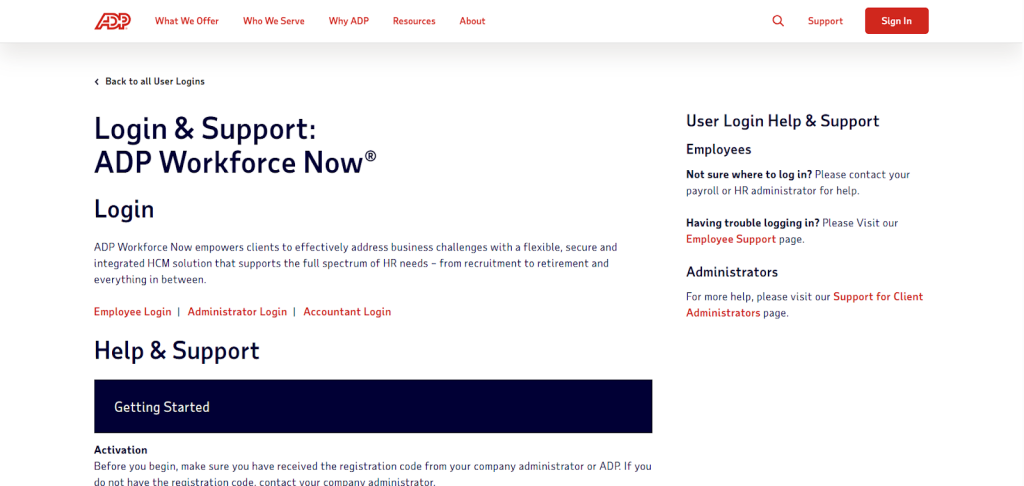
Perfect for mid-sized to large enterprises, ADP Workforce Now offers an all-in-one platform covering HR, payroll, and talent management.
Key Features:
- Automated payroll and tax filing across multiple geographies.
- Real-time workforce management with scheduling, time tracking, and leave management.
- Built-in compliance monitoring for changing labour laws.
- Customizable dashboards for reporting and analytics.
2. UKG Pro
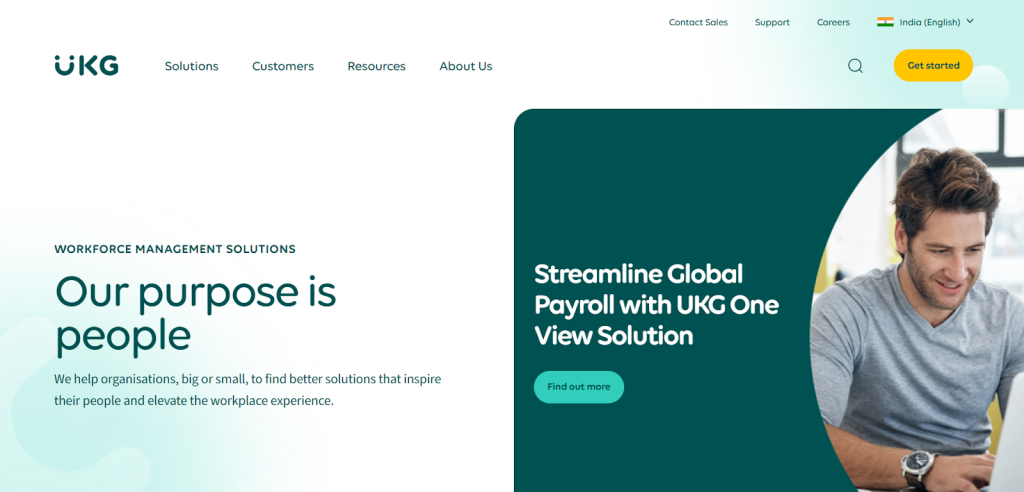
UKG Pro stands out for its strong focus on workforce experience and compliance management, ideal for organisations with complex shift patterns.
Key Features:
- Advanced scheduling and workforce forecasting tools.
- Seamless payroll integration with local tax compliance.
- Employee self-service portals with mobile access.
- AI-driven insights for productivity and cost management.
3. Workday Human Capital Management
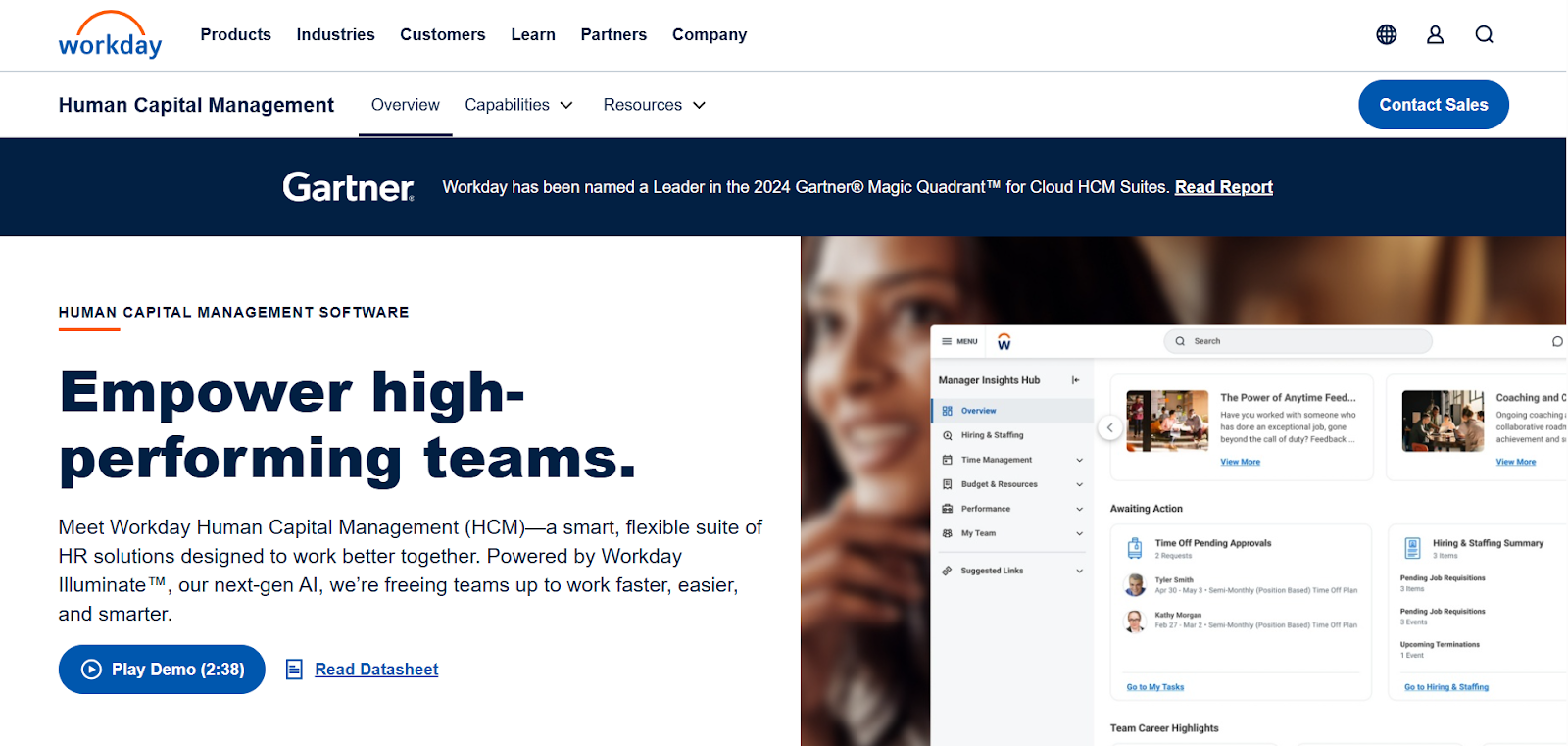
Workday HCM is a leading choice for enterprises looking for scalability and real-time workforce insights across global operations.
Key Features:
- Unified workforce and payroll data management.
- Advanced workforce planning and analytics.
- Support for multi-currency and multi-country payroll.
- Cloud-based deployment for scalability and security.
4. SAP SuccessFactors
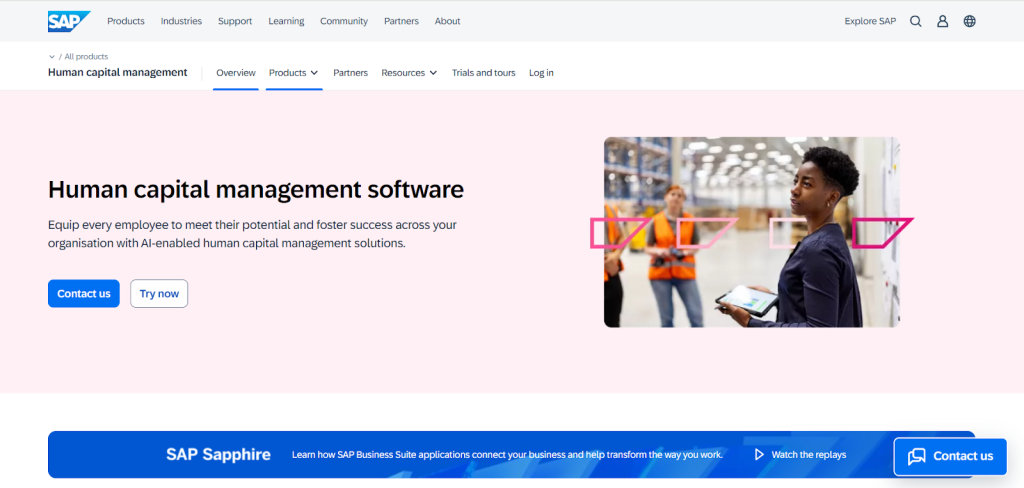
Ideal for businesses seeking deep integration with enterprise systems, SAP SuccessFactors offers robust HR and payroll capabilities.
Key Features:
- Global payroll management with localised compliance.
- Workforce scheduling and attendance tracking.
- Comprehensive reporting and KPI dashboards.
- Integration with SAP ERP and other enterprise tools.
5. Oracle HCM Cloud
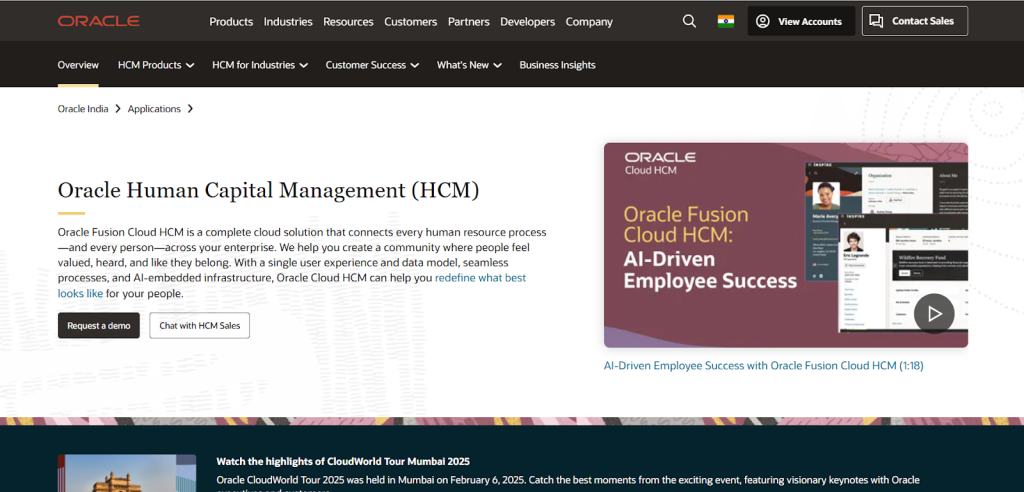
Oracle’s cloud-based HCM suite offers a complete solution for talent management, workforce planning, and payroll processing.
Key Features:
- Global HR and payroll management on a single platform.
- Real-time data synchronisation across HR and finance functions.
- Advanced security and role-based access controls.
- AI-powered analytics for workforce insights.
Finding the right workforce payroll system requires more than just scanning feature lists or vendor websites.
TeamLease Digital Marketplace offers a curated directory of trusted HR technology vendors, complete with verified reviews and detailed comparisons tailored to your specific industry, business size, and operational needs.
But technology is only one piece of the puzzle, industry-specific requirements also play a vital role.
Industry-Specific Applications of Workforce Payroll Systems
Every industry has its own workforce challenges, from regulatory demands to staffing complexities. Choosing an integrated workforce payroll system that fits your specific environment can help you unlock operational excellence and reduce risk.
Let’s explore how different industries benefit from tailored workforce management and payroll integration:
1. Healthcare
Managing a 24/7 workforce with rotating shifts, overtime, and compliance requirements is no small task. An integrated solution helps you:
- Simplify complex shift scheduling for doctors, nurses, and support staff.
- Ensure payroll accuracy by capturing overtime, night shifts, and on-call allowances.
- Maintain compliance with healthcare labour laws and patient care standards.
2. Education
Educational institutions manage a mix of permanent faculty, contract staff, and part-time employees. An integrated system allows you to:
- Handle diverse pay structures across teaching and non-teaching staff.
- Streamline contract management for visiting faculty and short-term hires.
- Ensure compliance with academic labour agreements and leave policies.
3. Finance and Banking
With strict regulatory requirements and highly skilled workforces, finance organisations benefit from:
- Accurate time and attendance tracking for compliance reporting.
- Automated tax and benefits management across regions.
- Secure, auditable payroll processes to meet industry standards.
4. Manufacturing and Logistics
High-volume staffing, shift rotations, and labour compliance make this sector complex to manage. Integrated systems support:
- Real-time workforce scheduling across multiple sites and shifts.
- Automated overtime and hazard pay calculations.
- Compliance with health, safety, and labour laws.
5. Public Sector and Government Agencies
Public sector organisations deal with rigid pay scales, union agreements, and multi-level compliance. Integrated solutions help by:
- Automating pay scale calculations based on government rules.
- Ensuring compliance with labour laws and public accountability standards.
- Streamlining audit preparation with accurate data and reporting.
An integrated workforce payroll system simplifies operations, ensures compliance, and builds employee trust, while aligning with your industry’s unique needs.
Once you’ve identified your needs, the next step is successful implementation, here’s how to get it right.
Best Practices for Implementing Integrated Workforce Payroll Systems
Choosing the right workforce payroll system is only the first step, successful implementation is where real value is unlocked. Whether you’re migrating from legacy tools or starting fresh, following best practices ensures a smooth transition and long-term ROI.
1. Conduct a Thorough Process Assessment
Before jumping into implementation, take stock of your existing workforce management and payroll processes. Identify:
- Current bottlenecks: Are manual entries slowing you down?
- Compliance gaps: Are you risking penalties due to outdated systems?
- Employee pain points: Do your teams struggle with accessing schedules, payslips, or leave balances?
2. Involve Key Stakeholders Early
Your HR team isn’t the only one impacted by this change. Include representatives from:
- Finance and payroll to ensure data accuracy and legal compliance.
- IT to manage system integrations and data security.
- Operations or department heads to address scheduling and workforce planning needs.
This cross-functional involvement helps minimise resistance and accelerates adoption.
3. Prioritise Data Accuracy and Migration
Data is the backbone of your workforce payroll system. Ensure:
- Accurate employee records, including contracts, pay rates, and leave balances.
- Historical data transfer, if needed for audits or reporting.
- Validation checks post-migration to avoid costly discrepancies.
4. Train Teams for Confident Adoption
A system is only as effective as its users. Invest in:
- Role-specific training for HR, payroll, and managers.
- Employee education on using self-service portals for viewing payslips, applying for leave, and checking schedules.
- Ongoing support through helpdesks or user guides to build confidence across the organisation.
5. Set Measurable Success Metrics
Define what success looks like for your organisation by setting key performance indicators (KPIs), such as:
- Reduction in payroll processing time.
- Decrease in payroll error rates.
- Improved employee engagement scores.
- Compliance audit pass rates.
Regularly track these metrics post-implementation to measure impact and identify areas for improvement.
6. Start Small, Scale Smart
If your organisation is large or geographically distributed, consider a phased rollout:
- Pilot the solution with a single department or location.
- Collect feedback and optimise processes before organisation-wide deployment.
- Scale confidently with proven results and user buy-in.
By following these best practices, you’ll ensure your workforce payroll system delivers maximum value, helping you streamline operations, strengthen compliance, and improve employee experiences from day one.
As you prepare your business for what’s next, it’s important to keep an eye on emerging workforce and payroll trends.
Future Trends in Workforce Management and Payroll Integration
Staying ahead of workforce and payroll challenges requires more than just solving today’s problems, you need to prepare for what’s next. As workforce models evolve, so do the technologies that manage them.
Here are the key trends shaping the future of workforce payroll systems and what they mean for your business.
1. AI-Powered Workforce Forecasting and Payroll Insights
Artificial Intelligence (AI) is moving from buzzword to business driver. Advanced workforce payroll systems are already leveraging AI to:
- Predict staffing needs based on historical data and business demand.
- Flag compliance risks before they happen.
- Identify payroll anomalies such as duplicate entries or unusual deductions.
- Optimise labour costs with data-driven scheduling.
2. Mobile-First Employee Self-Service
Your employees expect the same digital convenience at work that they experience in their personal lives. That’s why mobile-friendly systems are becoming non-negotiable. Leading solutions now offer:
- On-the-go access to payslips, schedules, and leave requests.
- Real-time shift notifications and approvals via mobile apps.
- Geo-fencing for clock-ins to validate location-based attendance.
3. Cloud-Based Scalability and Security
The shift to cloud-based workforce payroll systems is accelerating, offering organisations:
- Scalability to support business growth without significant infrastructure costs.
- Secure data storage with advanced encryption and role-based access.
- Real-time system updates to stay compliant with the latest regulations.
4. Employee Experience-Centered Design
Today’s top talent expects more than just accurate pay, they value transparency, accessibility, and engagement. Modern systems now focus on:
- Personalised dashboards showing relevant pay and schedule data.
- Employee wellness integrations, such as mental health resources.
- Feedback loops for continuous engagement and satisfaction tracking.
5. Global Payroll and Compliance Management
With hybrid work and cross-border hiring on the rise, businesses are prioritising:
- Multi-country payroll processing with localised tax and labour compliance.
- Multi-currency support for global teams.
- Automated legal updates for region-specific regulations.
This trend is particularly important for companies expanding into Southeast Asia and other emerging markets, where compliance complexity varies by country.
Conclusion
Integrating your workforce management and payroll systems is a business growth strategy. It helps you eliminate inefficiencies, improve payroll accuracy, reduce compliance risks, and deliver a better employee experience across every touchpoint.
Whether you’re leading an SME ready to scale or managing a large enterprise with complex workforce structures, the right workforce payroll system equips you to make smarter, faster, and more confident decisions.
Ready to find the perfect-fit solution for your business? Explore TeamLease Digital Marketplace to compare top-rated vendors or contact our experts for tailored advice on implementing integrated HR solutions that drive results.

